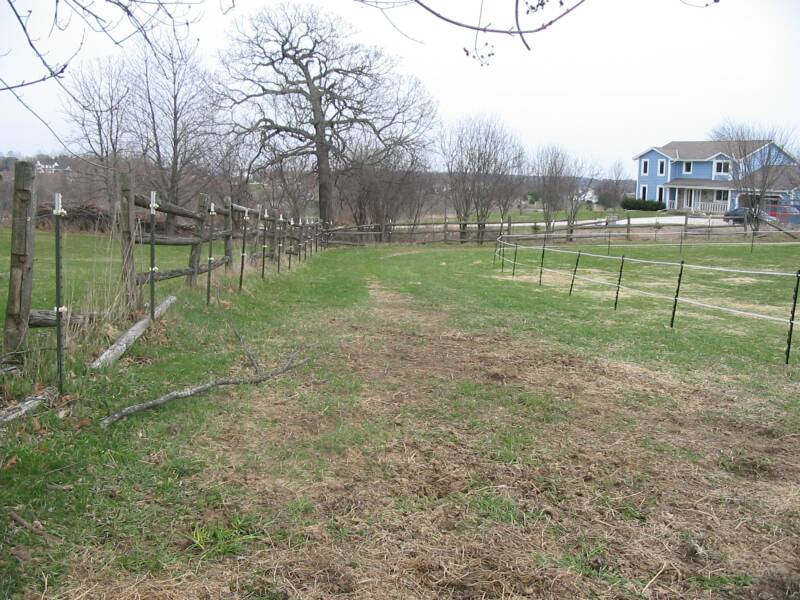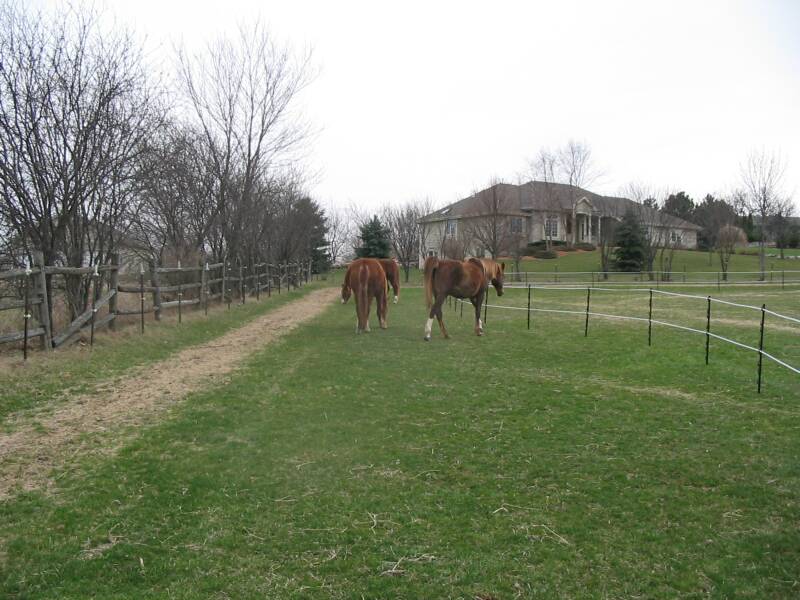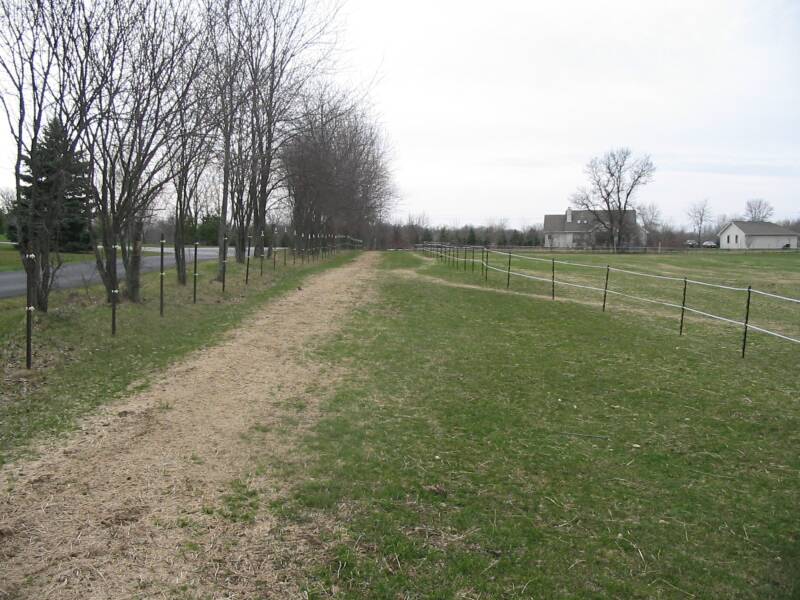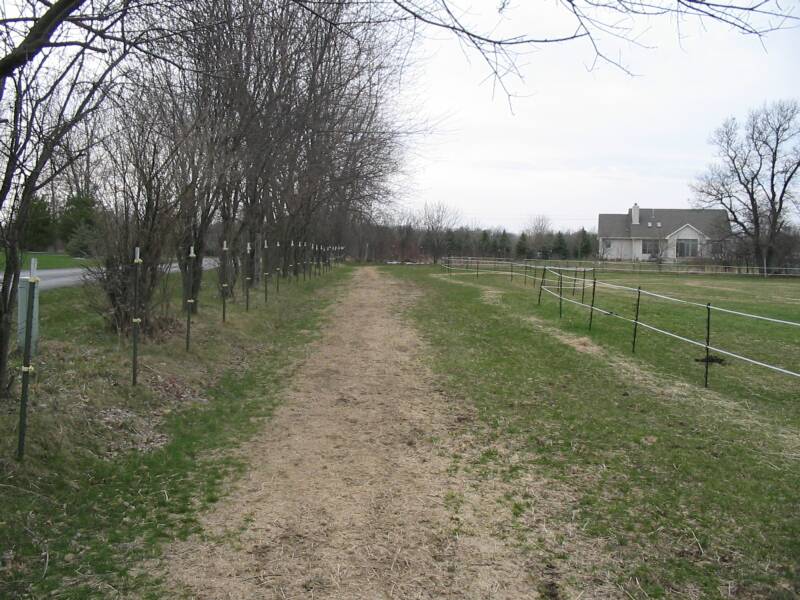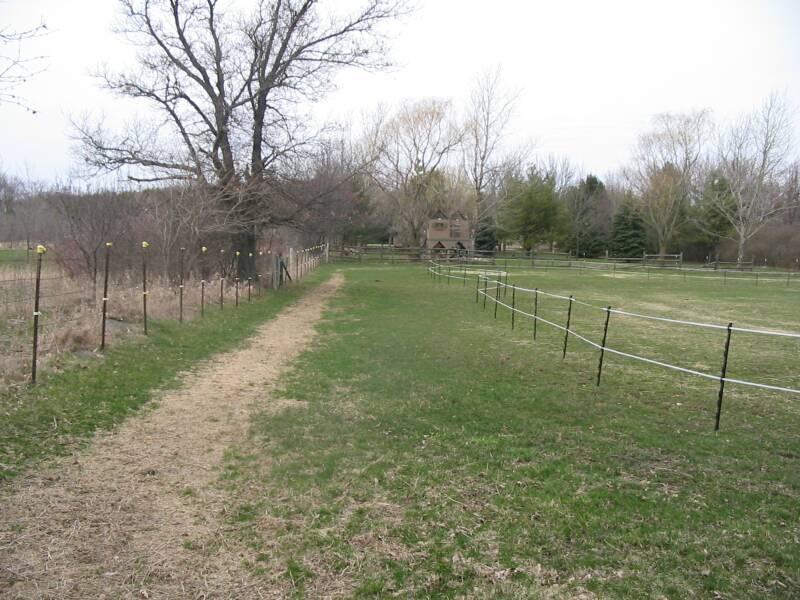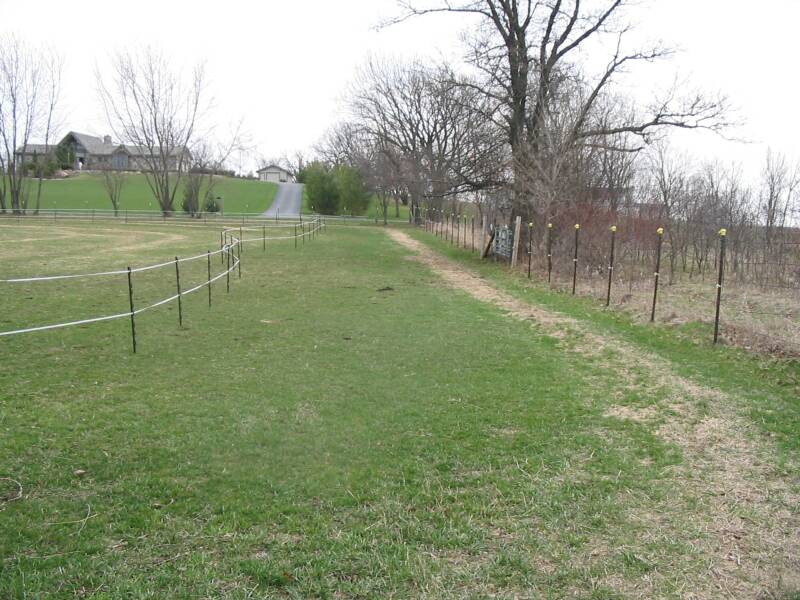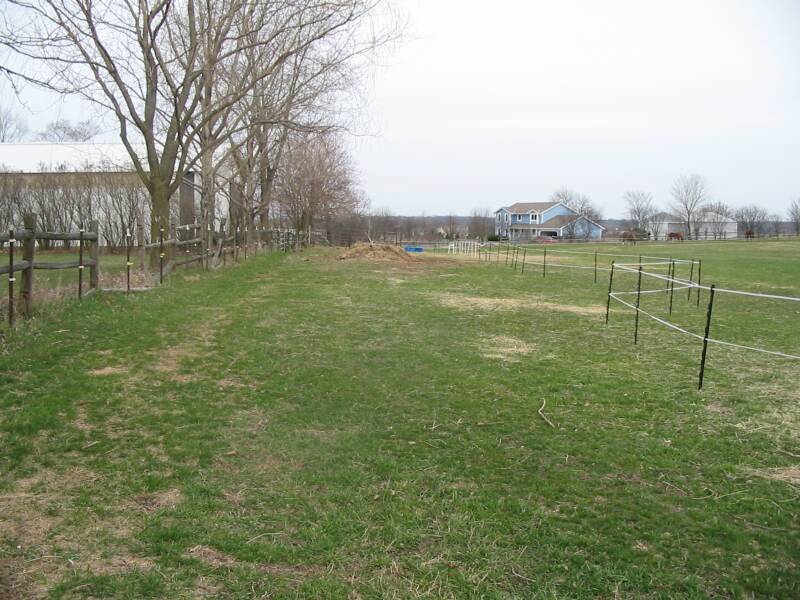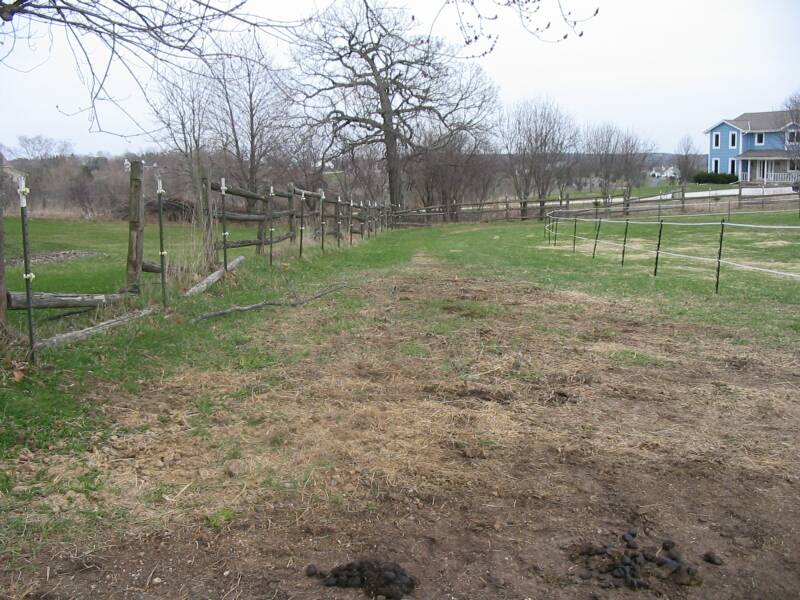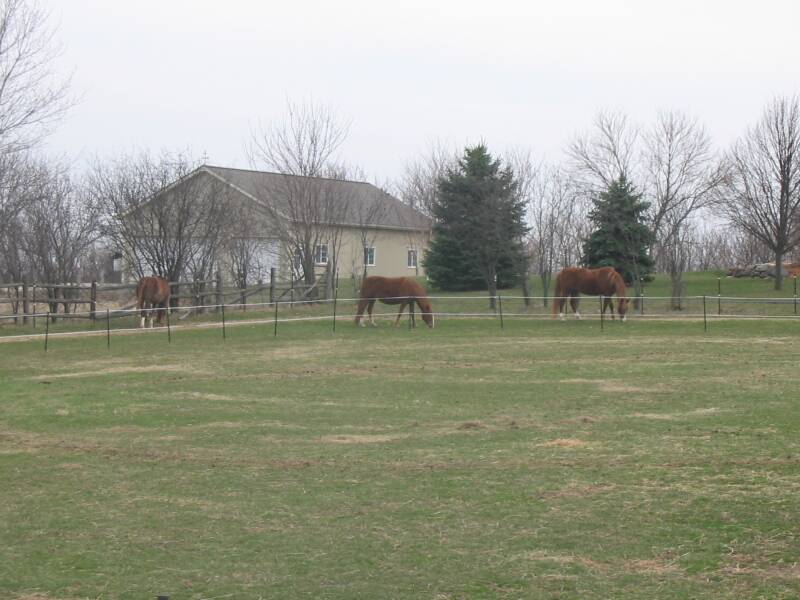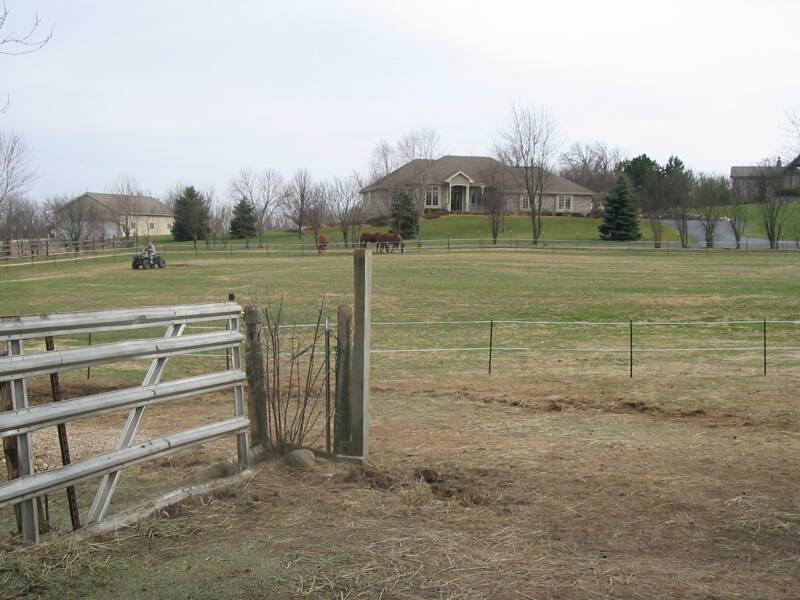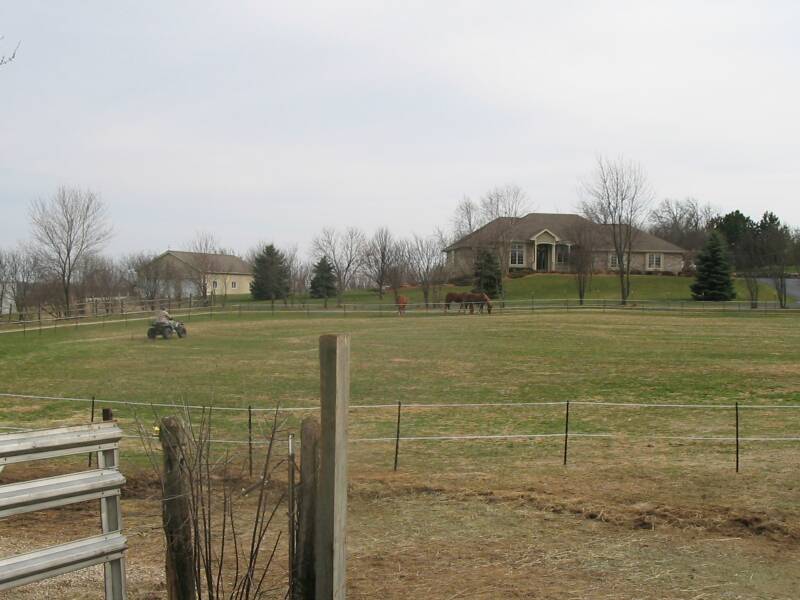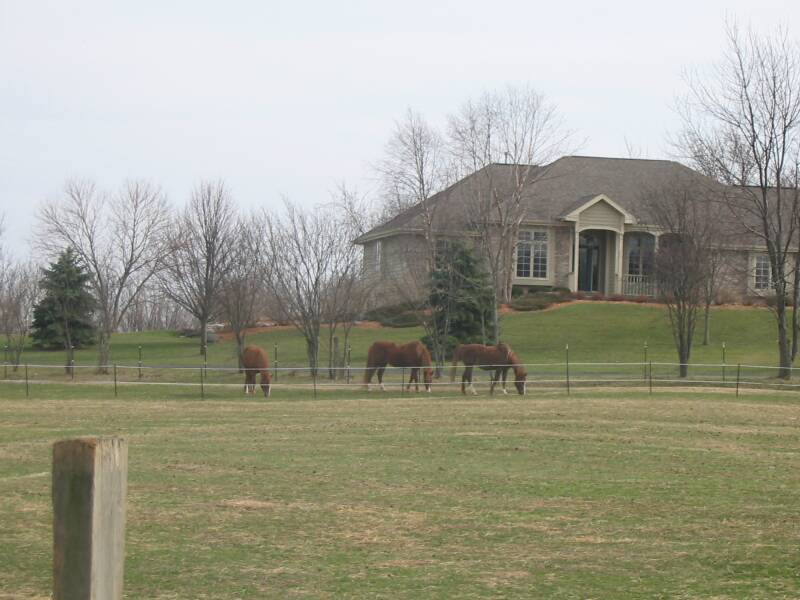My horses have been dry lotted for quite some time due to the fact that I have an IR, previously foundered mare. I was very anxious to get them out and get this project started.
We came up with a plan that would get it done quickly and cheaply. We put up the fence using poly step in posts. We ran two strands of electric tape all the way around. One high and one low, to inhibit them from reaching over and under for grass. There is a gate that enables us to get into the center area. This only took us one day and we did it for under $300.
We will be bringing in several loads of rock, and I plan on creating an interesting and amusing area for them. I will update photos as we complete the track. I chose to widen it in some areas to make room for a fourth horse and to give them more room where I know they like to shade in the hot, summer months. I scatter hay all the way around the track to encourage as much movement as possible (good exercise for me too). Their movement has increased tremendously as they have eaten down most of the grass that is on the track.
We turned them out on Sunday, April 9, 2006. I have already noticed a big difference. The movement is incredible. At first it was slow going. They were just excited to get some grass, (little as it was). But now they are moving much more in their search for more grass. They continued to eat hay regardless.
Normally my mare would not be able to handle even this small amount of grass. I cannot explain why she is not having difficulties with it, other than the fact that she is using the excess fructans (sugar) with all the movement. (See update below - Movement is extremely important) she has not had one sore day as a result of turning her out on the grass. Their whole demeanor has changed. They are upbeat and very happy. They are moving constantly.
Every couple of loops around they come all the way in to the barn area and nibble free choice minerals, take a drink of water, and move out.
As you can see in some of the photos, we clean up manure daily and spread and drag it in the center area of the pasture. We use this area for riding, ground work, and eventually for some occasional grazing.
I have recently taken photos of their hooves. I will continue to take photos to document changes in their hooves from the movement and the terrain.
Stay tuned.
Update 5/3/06
The grass is coming up fast and furious. There is no longer that need to constantly move for food.
As a result, the horses are not moving as much as the previous weeks, which means less loops around the track and less movement across the stone.
Knowing my IR mare, this could be disastrous. Unfortunately I think I am going to have to scrape my track. I will also be bringing in more stone. I was hoping that I would not have to do this, but this is the way it will have to be. Ah well, it was good while it lasted. I will update photos as I continue to get my track perfected.
The movement is so important. It is what makes this concept work. The fact that they have slowed down in their movement has brought around negative changes. I can notice a difference in their feet and now I am in a fast rush to get the track scraped. I do not want to lose any of the concavity that I gained so far!
I have also decided to narrow the track more in some places, and fill in my dry lot completely with stone.
I will continue to update as I go along.
Update, May 14, 2006
Due to an extremely busy schedule, along with the additon of a new horse and puppy, I have not had time to scrape the track. The good news is, the horses have worn it down to nearly nothing and with the additon of the new herd member, the horses have become very active once again.
Once again, the feet have gone through drastic changes. Gaining more and more concavity each week. The amount of uncontraction is unbelievable. The increased movement has really made a lot of headway towards my goal of self trimming hooves.
Perfect timing of a wind storm has brought a few large branches down. I dragged them onto the track. This really stirred things up as well! it looked like the Kentucky Derby around here with them chasing around the track! They enjoy these little changes and I usually find the branches located in different areas of the track so I know they are playing with them and dragging them around.
So, I am going to put off scraping the track until it is absolutely necessary. I plan on doing a grass kill along the fence line. I am going to first try spraying it with straight vinegar to see if this discourages them from eating it. I am then going to lay some form of plastic strip down and cover that with stone.
I am no longer fearful of the grass with my mare. I believe we are out of danger and she held her own through that period of rapid growth. We are on the right track once again.
I spoke with the trucker about bringing in more stone. He will be dropping more off soon. I will be updating with more pictures at that time.
I have already taken two sets of photos of hooves. I will be posting them soon too.
